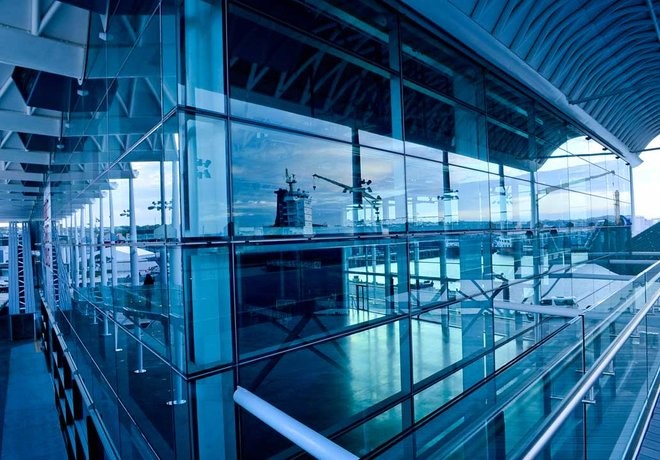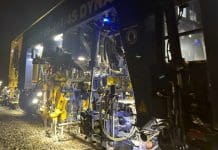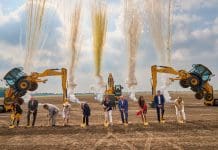Dave Friar, international operations director at engineering solutions provider Boulting, explores the concept of modularisation and how it is transforming the design and build process both at home and overseas
While Industry 4.0 continues to revolutionise the way manufacturing and processing plants operate, many businesses are also looking at how the design and build of a facility can be accomplished more efficiently.
Modularisation is not a new concept. In fact, many plants have been using it to reduce the complexity of internal systems for many years. However, more and more plant managers are now exploring the model as a way of reducing construction costs of a plant and, more interestingly, testing new markets.
The process involves premanufacturing a facility and its components on an established production site, before shipping it to the desired location and piecing it together. Each facility is made up of a number of container modules of varying sizes, within which all of the required equipment is installed.
Drivers for modularisation
Designing and manufacturing components offsite ensures an accurate use of materials, a controlled waste system and scheduled delivery. The overall outcome is often more sustainable and cost-effective, allowing the delivery of increasingly complex projects.
With many manufacturers moving operations to developing countries where costs are lower, plants are often built in remote locations with limited infrastructure such as power, road access and construction equipment. In many of these countries, there is also a severe lack of qualified construction personnel, which can impact the overall quality of a project.
Constructing on a dedicated fabrication site, such as Boulting’s facility in St Helens, overcomes these issues as the infrastructure is already in place. Experienced labourers are also at hand to build, test and commission a facility before shipping and erecting in its final location, ensuring a quicker and more cost-effective solution.
Build location can also be an issue if the facility is in a hazardous environment or has the potential for adverse weather conditions or extreme temperatures. For example, sea-based constructs are subject to unpredictable seas as well as strong offshore winds, which makes these projects prime candidates for a modular approach.
With the UK set to retain its title as a world leader in offshore wind power, the country’s capacity has the potential to expand up to five times its current level by 2030. To ensure this capacity is expanded safely and reliably, modularisation may be the key.
Construction at sea can be both dangerous and costly. Modularisation minimises risk and time spent in the hazardous area, allowing the facility to be built and tested in a controlled environment.
While it has its benefits, particularly for projects overseas, some builds do not lend themselves to modularisation. If site construction is considered routine and a suitably skilled workforce is available, then modularisation may not be the best course of action.
Planning your modular build
Every facility is unique and the build process should be looked upon in the same way. The actual planning of a modular build is not dissimilar to that of a field construction build. It all comes down to the needs and wants of the client.
The top consideration for any modular build is the size of the plant and the equipment needed. This immediately impacts on the type and total number of containers required, which can in-turn effect shipping and transportation costs.
The modules themselves are available in multiple shapes and sizes, each with their own unique features. Mega, large and intermediate modules require special shipping by either sea or rail. Smaller containers, such as truckable, pipe-rack and skid mounted, are easily moved by large road cargo vehicles. Before selecting the best module for the job, engineers should ensure that there is appropriate access to waterways, rails and roads.
At present, we are working on an alcohol blending plant at our production facility in St Helens. The plant, which will be shipped to Angola by sea, consists of eleven purpose-built 40ft containers. The plant itself only takes up six containers, with the remaining five being used to ship additional equipment.
This particular facility is being used to test a potential new market. Should it prove to be a success, the modular build will be taken apart and shipped to a new location and replaced by a fixed build.
If the project is overseas, like the one mentioned above, the containers must follow an ISO footprint, which is similar to a traditional shipping container. However, if the project’s end site is in the same country where it is being prefabricated, skid mounting is a more effective technique.
This approach is a popular method for distributing and storing machinery and involves permanently mounting equipment onto the container frame or rails, ensuring equipment is safely transported to its final location.
While there are no specific regulations and legislations surrounding modular builds, projects must still adhere to the legislative requirements of static builds, including Planning, Building Regulations and Good Manufacture Practice.
As overseas investment continues to grow, modularisation is expected to become more widely used in the years to come. With so many benefits, it’s hard to see why manufacturers wouldn’t explore the concept’s potential.
Whatever the solution, be it modular or fixed, it’s important that the decision is not rushed and all factors are carefully considered, not just the benefits.
Dave Friar
Boulting













![[VIDEO] UK-based firm reveals ‘world’s first’ fully AI-driven architectural project Studio Tim Fu has revealed the 'world's first' fully AI-driven architectural project in Slovenia, developing six luxury villas on the Lake Bled Estate](https://www.pbctoday.co.uk/news/wp-content/uploads/2025/03/Interior-1-studio-tim-fu-218x150.gif)
